Kiosk-Club Lake Loop
May 16-18, 2015 - by Dan Minkin
Introduction:
There is something electrifying about the first dip of a paddle after a long winter. Muscle memory rushes to embrace the surge of wood against water, taking up the journey through the winding pathways of the wilderness, where last it left off. The lake and brook trout, that rise from the deep when the lakes are cold, tempt us into the Algonquin interior before they warm. But trout make no promises.
For this Victoria Day weekend I was taking my partner Caleigh on a 2-night loop from Kiosk. We would camp on Club Lake and then Whitebirch Lake, expecting abundant brook trout on the former and scarcer but larger lake trout on the latter.
 |
|
| Route: Day 1 in blue - Day 2 in green - Day 3 in orange | |
Day 1:
We left early enough to avoid long-weekend traffic jams. We zipped up Highway 11 to Algonquin North Wilderness Outfitters, who had delivered our rental canoe to Kiosk in advance. After stopping to pick up lifejackets, a bailer kit and a few bonus local fishing tips, we rumbled into Kiosk. We quickly dealt with the permit office and pushed off the beach into the grey, restless waters of Kioshkokwi Lake.
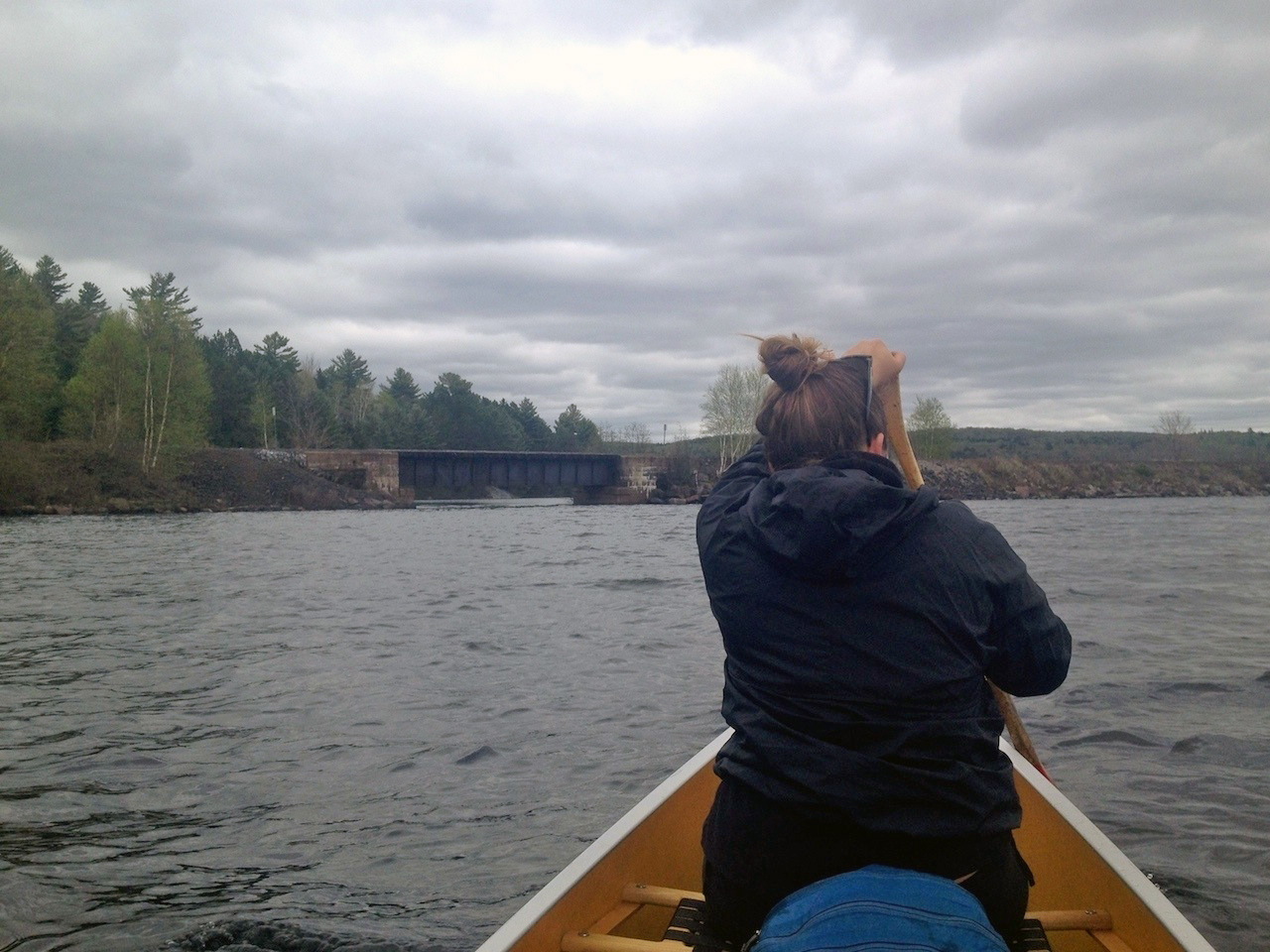 |
|
| Kioshkokwi Lake, approaching One Mile Bridge under grey skies | |
We paddled east, under the old railway bridge, and into the protected bay behind it. We finally arrived at the grassy portage landing, where the swollen waters of Mink Creek came rushing down from Little Mink Lake. A bald eagle landed on a tall spruce tree. It was just close enough to photograph with my simple point-and-shooter. It posed majestically for a moment and then dramatically took to the sky.
| Bald eagle on the Kioshkokwi-Little Mink portage | |
The official route from Kioshkokwi to Mink Lake consists of this 635-meter portage, followed by a 600-meter paddle across Little Mink Lake, followed by a somewhat shorter portage to the northwestern tip of Mink Lake. However, the old railway bed crosses the Kioshkokwi-Little Mink portage around the halfway point and continues along Little Mink and Mink Lakes. Taking the portage trail as far as the junction with the rail bed, and then following the latter past Little Mink to Mink Lake, makes for a single portage of roughly 1300 meters.
We opted to try the rail bed route to save some loading and unloading time, and found that although it is longer than the sum of the two official portages, the wide, graded gravel trail makes for a considerably easier carry. The rail bed even offered a, gently-sloping put-in at the northwest end of Mink Lake, in contrast to the steep-sided berm that it follows across Little Mink.
| The "alternative" portage route along the rail bed | |
Our next six kilometers were a straight-line paddle southeast along Mink Lake, a broad ribbon of water nestled between surrounding uplands. The south-facing hillside to our left was covered with birch and other hardwoods, just beginning to turn green in wispy pastels. The opposite shore was dominated by rich forest-green spruce and cedar, perhaps due to northern exposure. A stream was cascading out of the spruce, down from Whitebirch Lake, one of the lakes tucked away up the hillside that would be our route on the return leg of the trip.
Our conversation turned to the ways the history of the land is presented by Mink Lake. The valley that cradles this lake was once the path of the Fossmill Drainage - the torrent of glacial meltwater flowing southeast from the receding Laurentian ice sheet to the Champlain Sea where the Ottawa Valley now lies - that first opened these highlands to the cold-water fishes we were pursuing. Today, of course, the lake drains in the opposite direction, northwest into Kioshkokwi Lake and the Amable du Fond River. And superimposed on this footprint of glacial history is one of modern history - the old railway berm, plainly visible along the northeastern shore, which carried rail traffic until as recently as the mid-1990s.
| The hardwood-covered northeastern shore of Mink Lake, with the rail bed visible | |
As we approached the end of Mink Lake and the portage to Club Lake, we saw a domed islet become furry. It turned out to be the first moose of our trip and certainly the least animate, but the only one we'd get close enough to for a photo.
| Fellow travellers passing the dead moose, Mink Lake | |
The portage between Mink and Club Lakes had a few typical springtime obstacles, like fallen trees and a deep puddle across the trail. I had to put the canoe down and coast across the puddle in it.
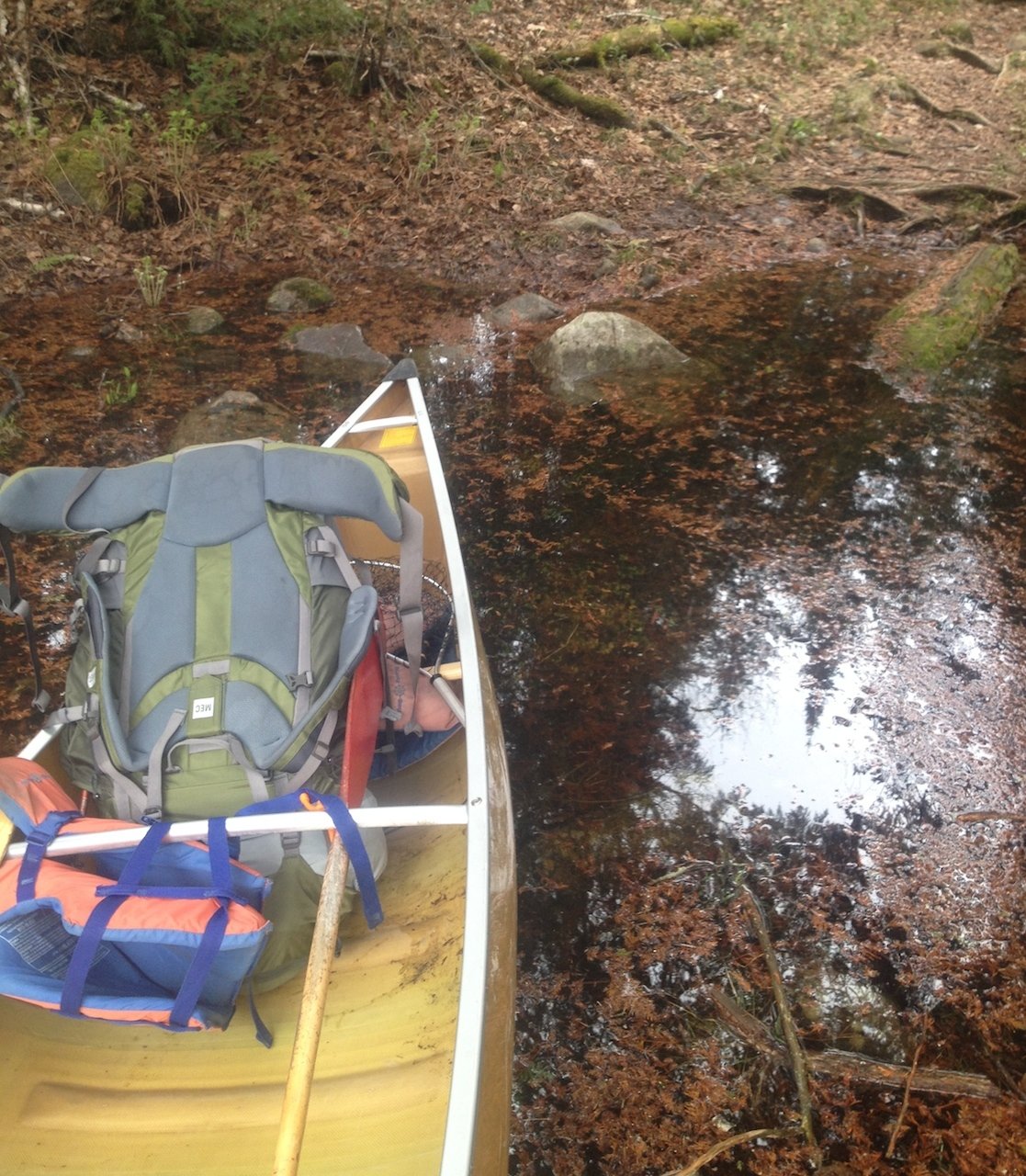 |
|
| Canoe laid down to cross a puddle on the portage to Club Lake | |
At the end of the portage we were greeted by the Club Lake ruins. they consist of the roofless, brick and concrete walls of a late 19th century lumber building and some associated debris. Having been in a hurry the only other time I'd passed this way, this was a great opportunity to explore the site while resting from the awkward portage. Bricks piled against the inside of the walls let us climb up and see the view from the upper windows.
| Interior of the Club Lake ruins | |
| Exterior of the Club Lake ruins | |
| Timber equipment at Club Lake ruins | |
Club Lake is shaped like a pair of eyeglasses, and we were heading for the northern campsite on the eastern "lens". As we paddled up the marshy channel that forms the "nose bridge", two distant moose ran splashing across it, ahead of us and perhaps a minute apart.
It was mid-afternoon when we reached the campsite. Although this site has a poor reputation, the outfitter had mentioned that it recently received some maintenance and was nicer now. The campsite was indeed pleasant, and suited our purposes well. However, with a low earthen shoreline on shallow and weedy waters, it wouldn't be a great spot to swim in the summer.
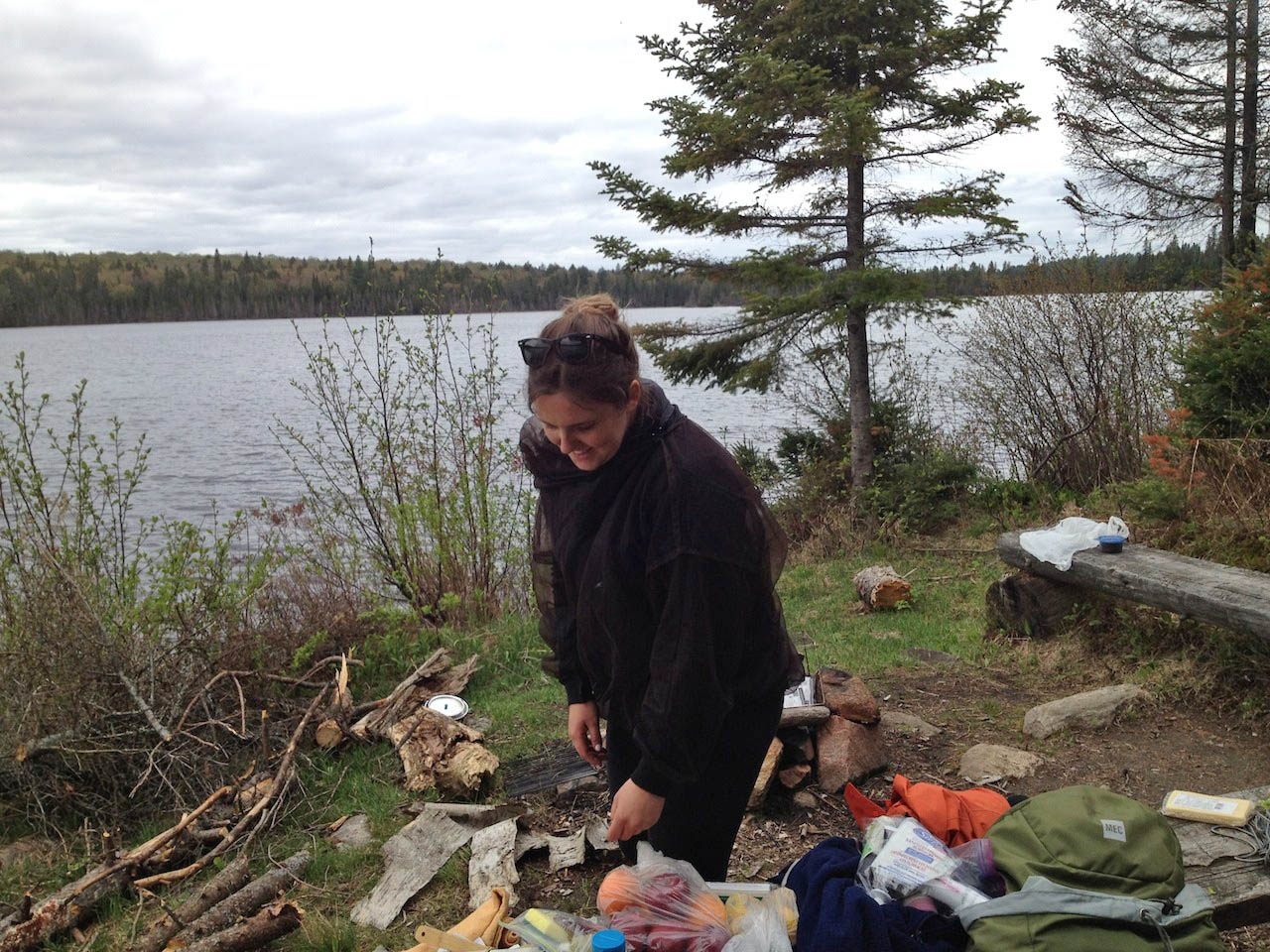 |
|
| Our campsite on Club Lake | |
After a late lunch, we got into the canoe to start the search for brook trout. We searched for them near shore and in open water. We also went up the creek towards the Mouse Lake portage to try the outflow of the waterfall there. But wherever we fished, all we could catch were pumpkinseed, rock bass and chubs. We returned to camp in the failing light for a small fishless supper, and retired to the tent for dreams of a second attempt.
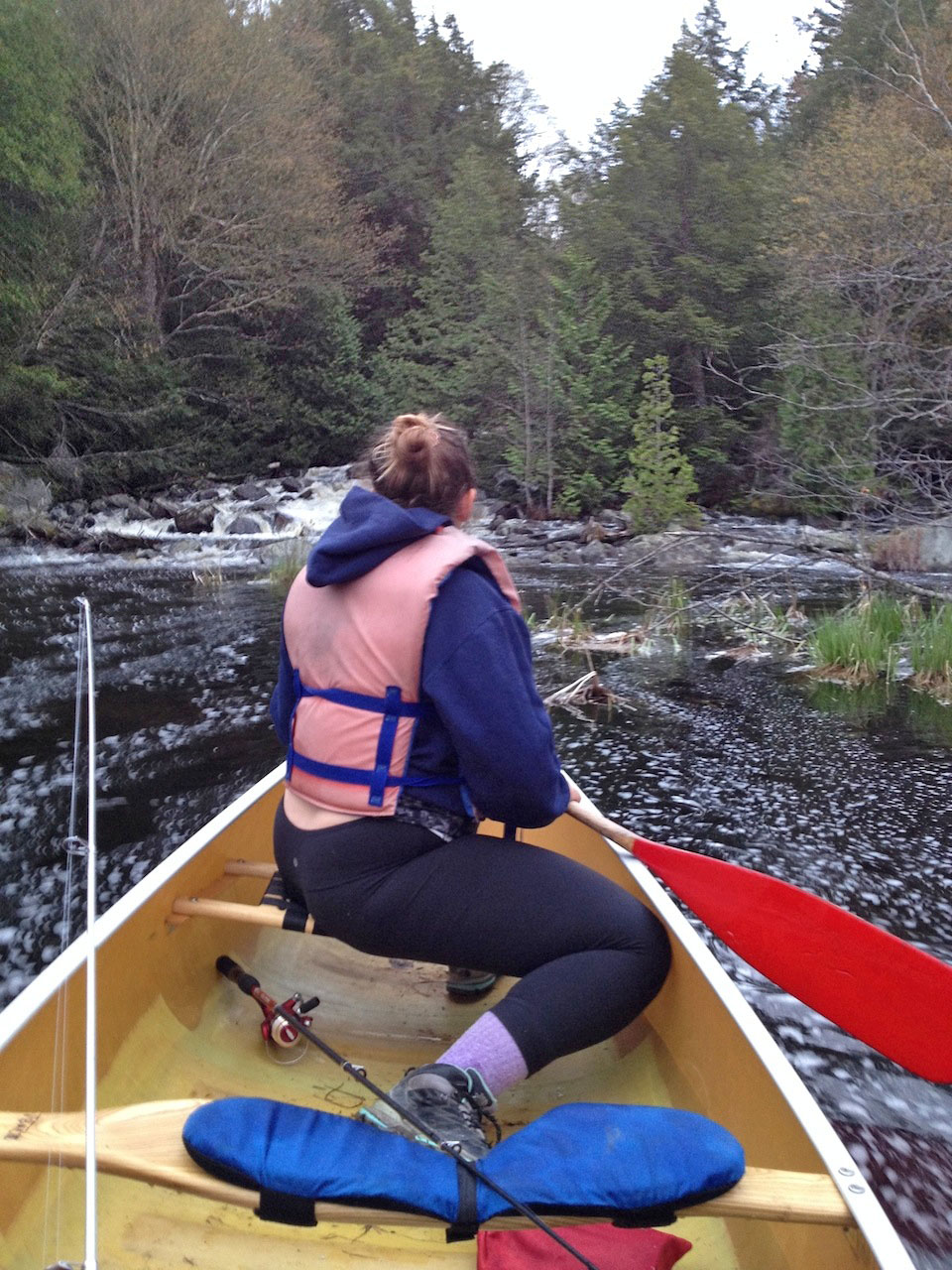 |
|
| The creek draining Mouse Lake into Club Lake | |
Day 2:
I left the tent alone around 6:00 am and slid the canoe into the glassy lake. I tried fishing out in the middle of the lake, but all I caught was some shots of the morning mist. I did however get a repeat of two moose - perhaps the same two? - crossing the "nose bridge" channel outside of camera range, this time moving slowly and serenely compared to the previous day.
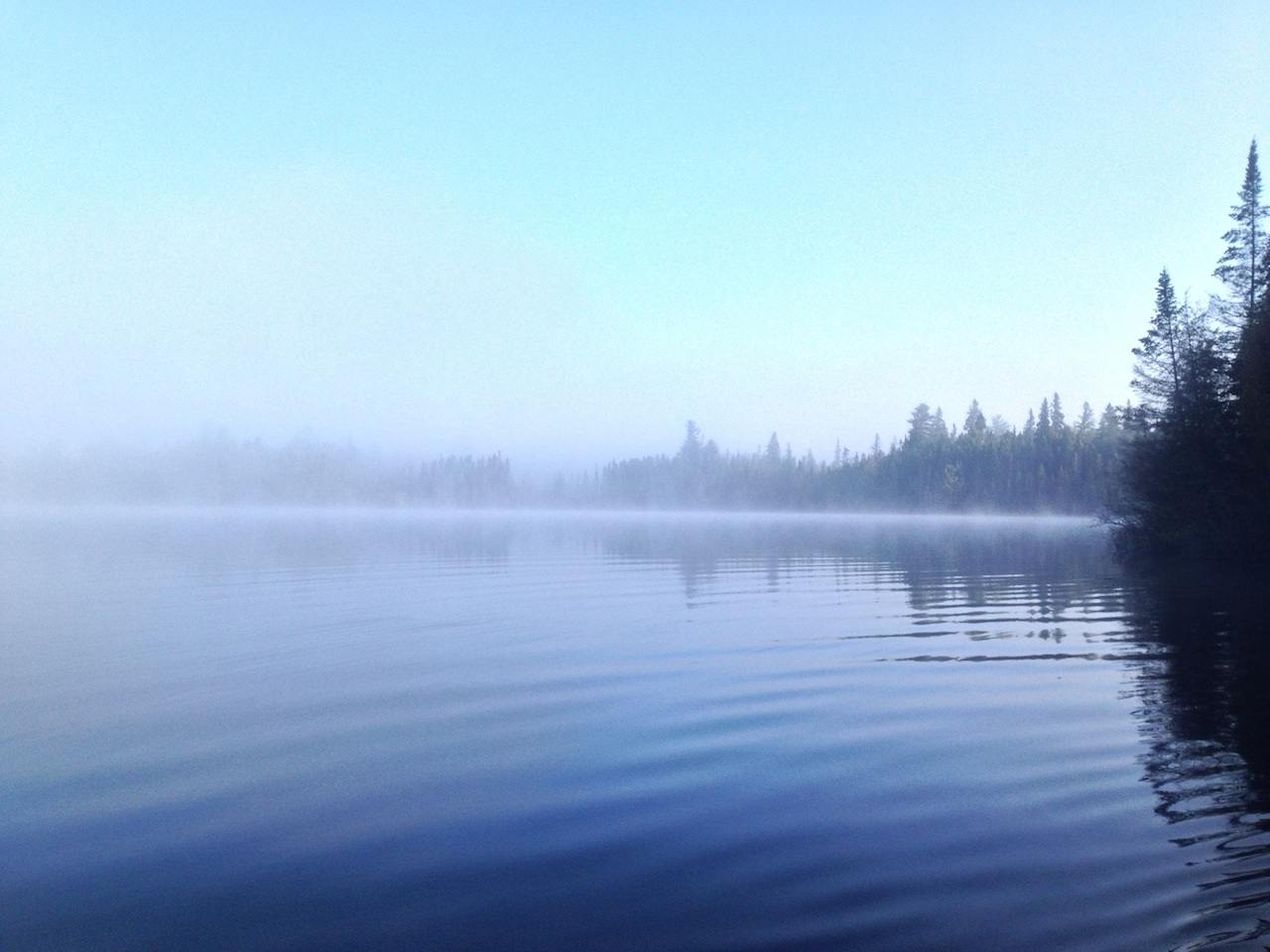 |
|
| Club Lake by dawn | |
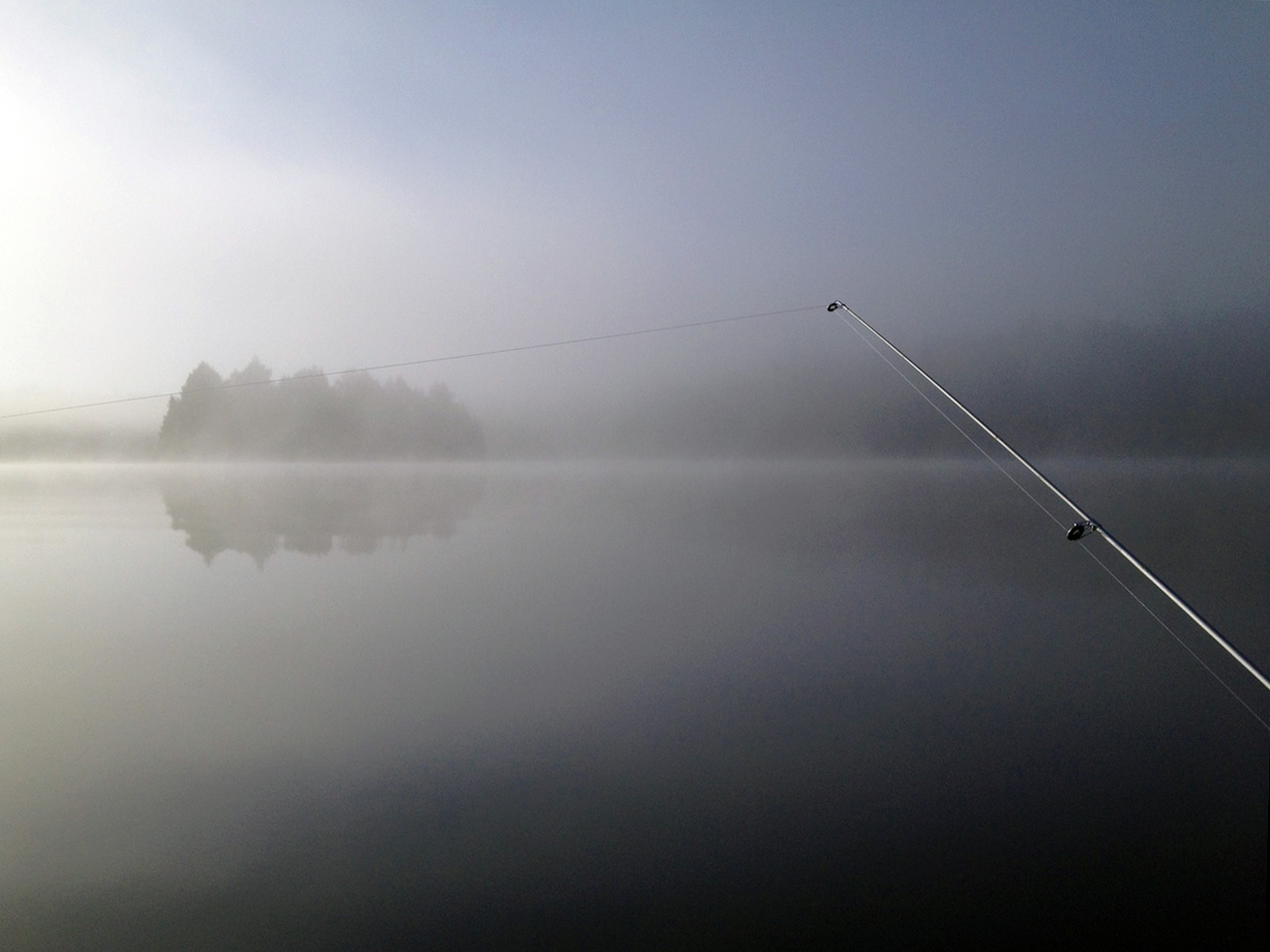 |
|
| Fishing the misty morning waters of Club Lake | |
I returned to camp and ate breakfast with Caleigh. We watched two distant moose, this time ambling along the southeast end of the lake. If they were the two I'd seen shortly before, they'd covered ground quickly. After breakfast, we went fishing again; once again catching only panfish and chubs. Soon we had to accept that the brook trout of Club Lake had eluded us, and it was time to move on.
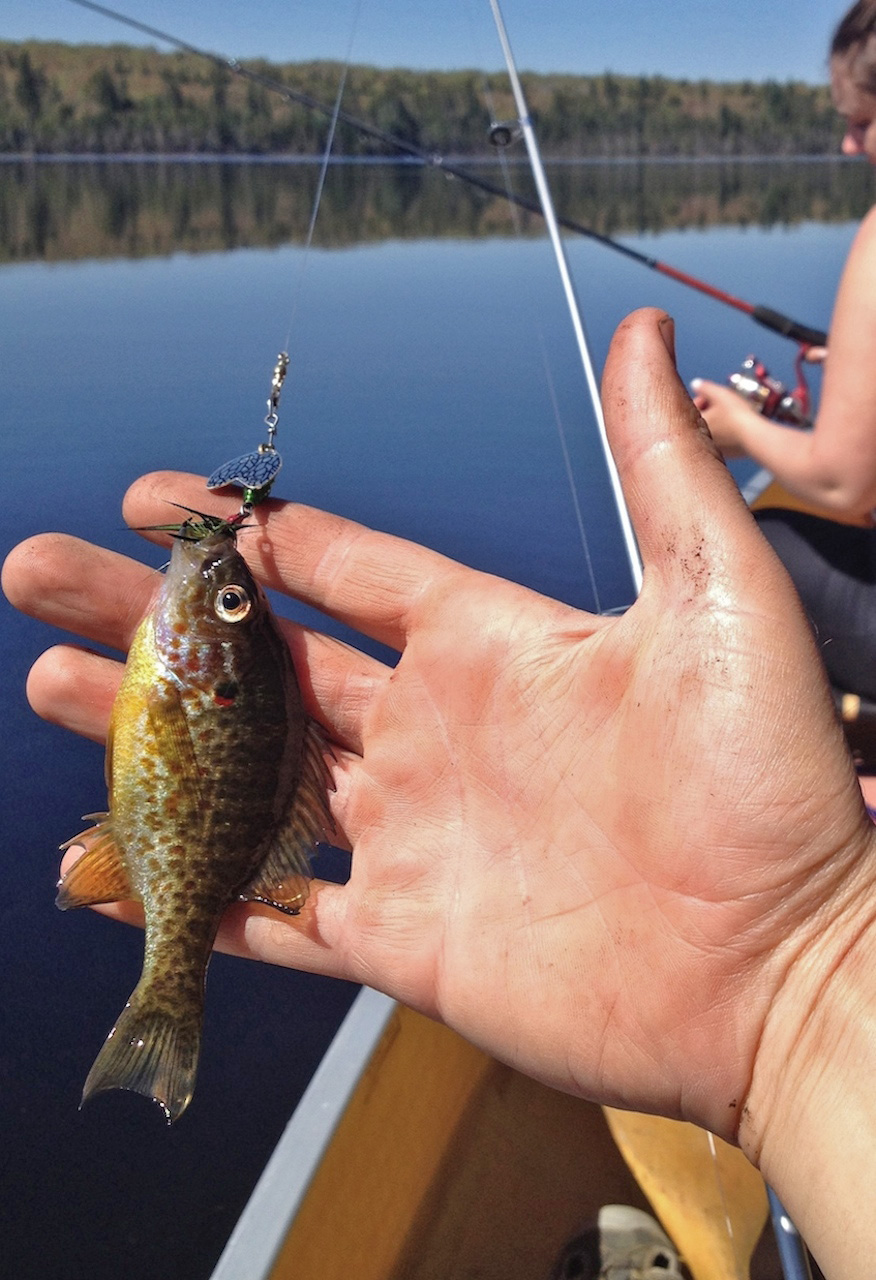 |
|
| Pumpkinseed of Club Lake | |
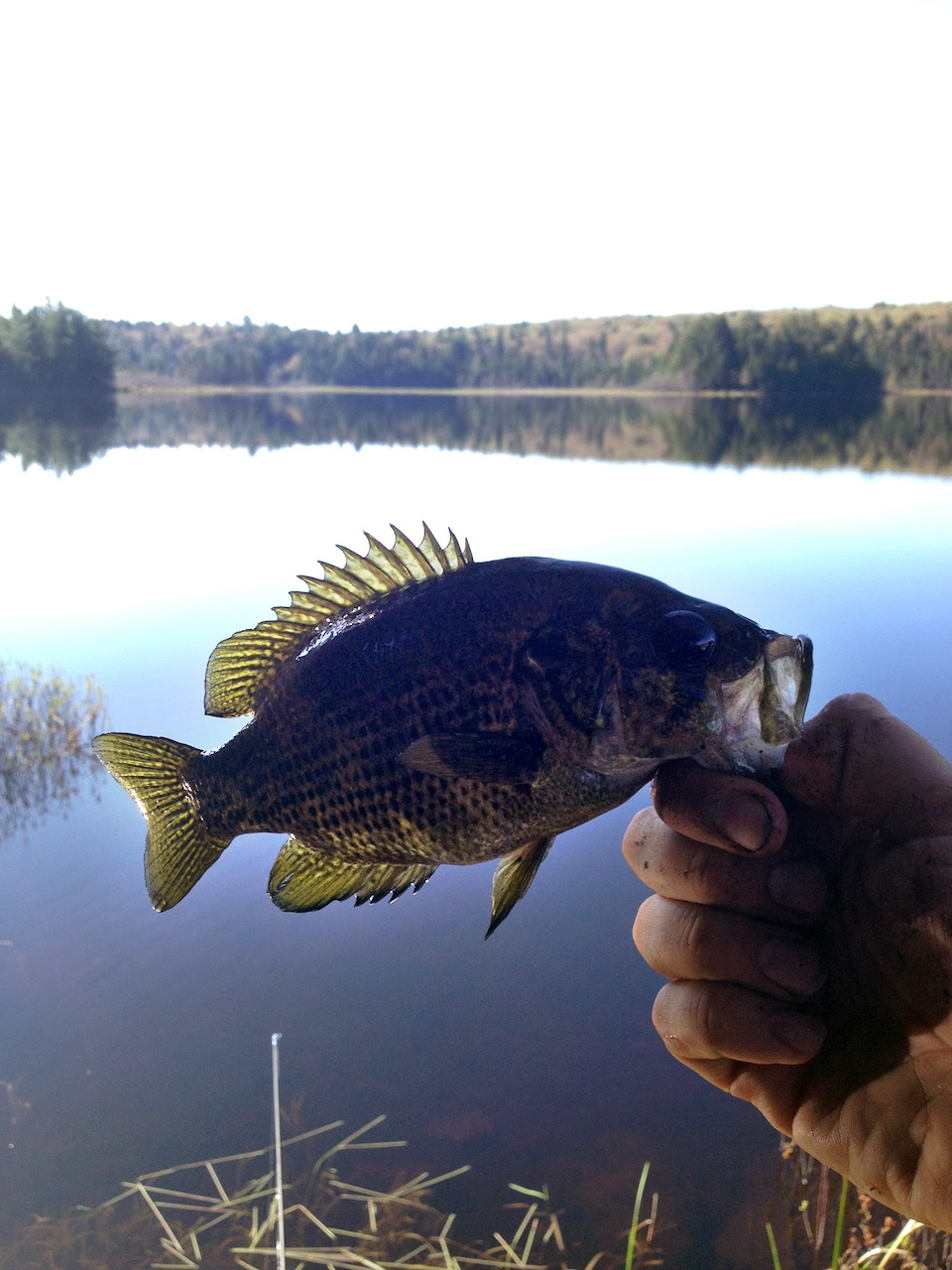 |
|
| Rock bass of Club Lake | |
Our route through Waterclear and Whitebirch Lakes gave us rockier, more typical Canadian Shield scenery than the previous day's parallel route through Mink. Stopping to fish in front of a rock face on Waterclear Lake, I heard a splash as I made a cast. What had I knocked overboard? I quickly realized it was in fact the handle of my cheap Canadian Tire reel which had come loose and was now lost. I started winding the reel by hand, and managed to pull in a rock bass.
A group of three had been travelling our way, passing us when we stopped to fish and falling behind when they double-carried portages. We got to Whitebirch Lake before them, winning a choice between two remaining campsites on the fully-booked lake. Whitebirch Lake's four sites are all quite nice, but lacking in privacy, with all but the northernmost one clustered tightly on a small peninsula. We took the northern one of the three "clustered" sites, which at least wasn't in direct view of its closest neighbours.
Being on a campsite with a nice rocky shoreline tempted us to brave the frigid May waters for a dip. Our campsite was beside the outlet of the lake, and I did a little exploring along the outflow stream through the forest. This is the stream we'd previously seen cascading into Mink Lake. It looked from here to be a series of small drops and beaver ponds surrounded by thick growth. It's interesting to realize that although Waterclear and Whitebirch Lakes form links of one corridor for purposes of human travel, Waterclear joins the Mink Creek system via Club Lake, while Whitebirch drains directly down the slope I was now exploring to Mink, and has no connection to Waterclear.
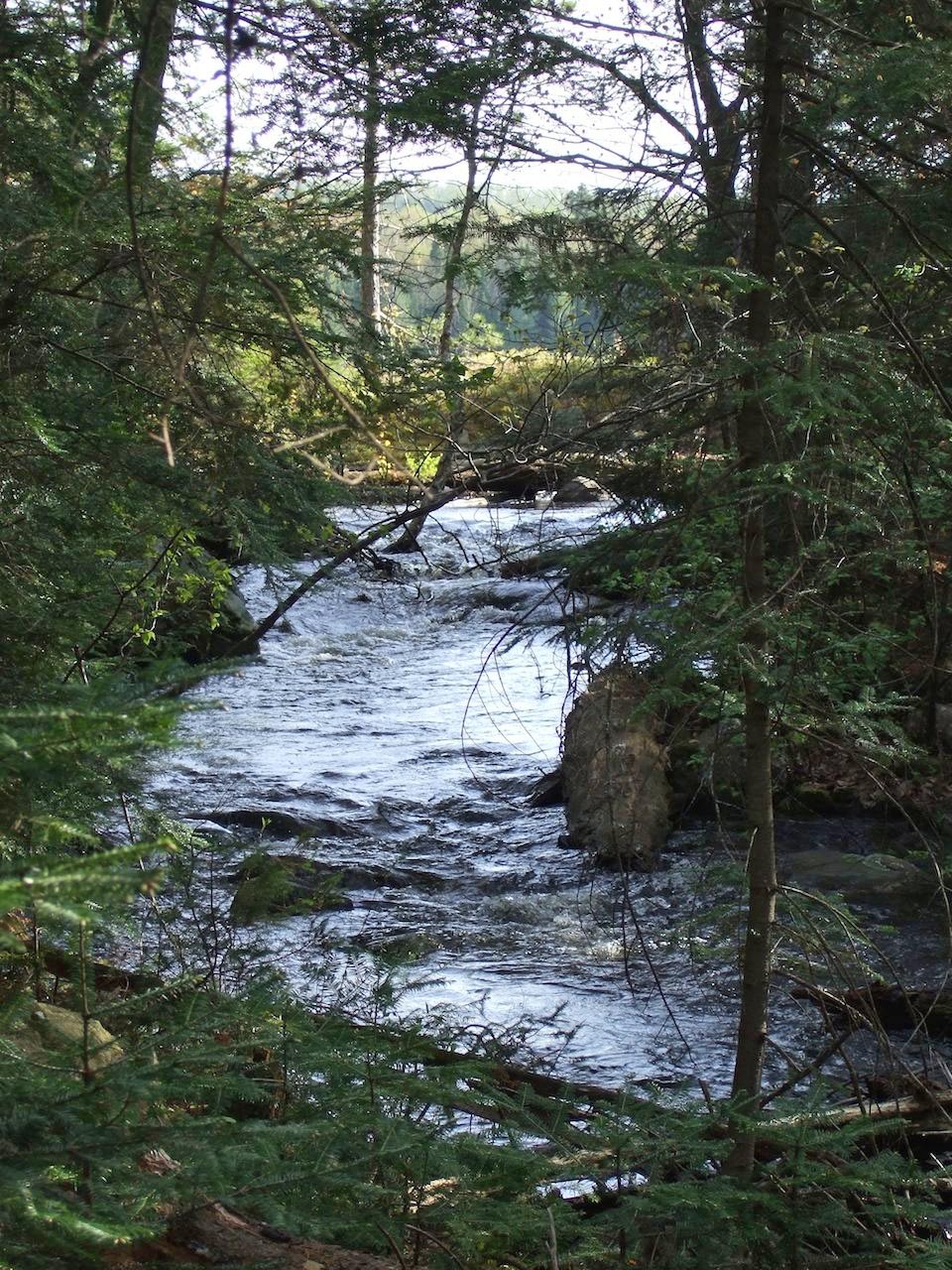 |
|
| The outflow creek from Whitebirch Lake | |
In the evening we paddled out in search of lake trout. Caleigh used the intact rod, and I used the one with the missing reel handle. With the light fading I felt a tug, and hand-lined in a small lake trout. Had this been a lake with a slot regulation, this fish would have been outside the protected size range. So perhaps the small meal was more conservation-friendly than a more midsized one.
Back at the darkened campsite I cut fillets, wrapped them in foil with garlic and lemon, and let them cook over the fire. The meat was pale, almost white, unlike the deep red lake trout I've seen from other lakes. Caleigh said it was the best fish she'd ever tasted. It would be the only char we caught this trip, but every lake trout is infinite. I went to sleep satisfied with that result.
Day 3:
The chatter of rain on the tent fly talked me out of an early-morning fishing attempt. As it petered out, we packed out of the campsite and got a reasonably early start on the homeward journey. The first portage of the day was the longest of the trip, into Little Mink Lake. We had skipped this lake on the way in by taking the rail bed route, but it is quite a pretty one. Today, much of the surface was covered with pollen.
| Pollen on the surface of Little Mink Lake, disturbed by a paddle stroke | |
Another portage and we were back on the shore of Kioshkokwi where we'd seen the eagle on the first day. This time I made a few casts into the Mink Creek outflow, and was soon fighting a smallmouth bass. Being out of season, I released the fish as soon as I landed it without pausing for a photo. But Caleigh got a candid shot of me unhooking it.
| Releasing an out-of-season smallmouth bass at the Kioshkokwi-Little Mink portage | |
After that it was an uneventful paddle back to Kiosk. Chatting with others when we got there, we realized it had been buggy there the whole weekend, and somehow we barely encountered a single blackfly or mosquito on our loop. An employee of our outfitter was there picking up canoes, so we gave him all our rented equipment and saved ourselves a stop at the shop on the way out. Another season was opened, and we were headed home.